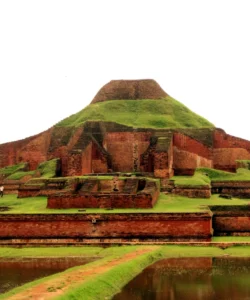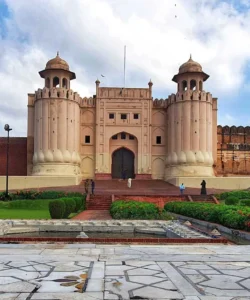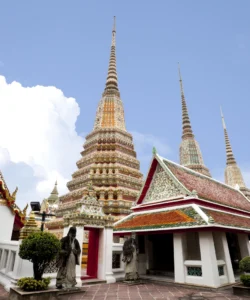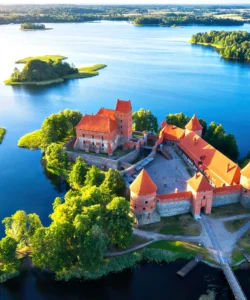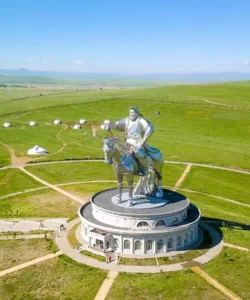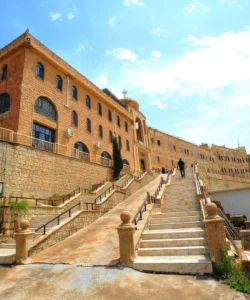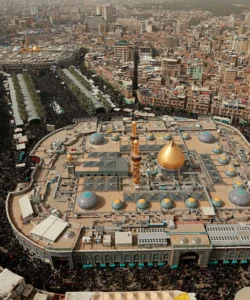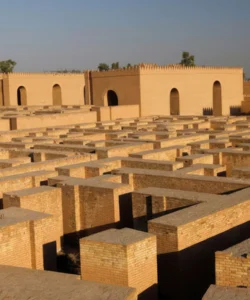Samarra Archaeological City is a vast and historically significant site in central Iraq, recognized as a UNESCO World Heritage Site for its outstanding and well-preserved remains of the Abbasid Caliphate’s capital city. For a brief but powerful period in the 9th century, Samarra was the center of a major Islamic empire, and its ruins offer an unparalleled glimpse into the architecture, art, and urban planning of this influential era.
Name: Samarra Archaeological City (Arabic: سامراء)
Address: The archaeological city is located on the east bank of the Tigris River in the Saladin Governorate of central Iraq, approximately 125 kilometers (78 miles) north of Baghdad. The modern city of Samarra is situated within a portion of the ancient ruins.
How to Get There:
Travel to Samarra is currently extremely difficult and unsafe for general tourism due to political instability and security concerns in Iraq. The site is located in a region that has been affected by conflict. The following information is for historical context and is not a recommendation for travel.
- By Air: The closest international airport is Baghdad International Airport (BGW). From Baghdad, a long and dangerous road trip would be required to reach Samarra.
- By Road: In more stable times, Samarra was accessible by road from Baghdad and other cities. However, the route has been a focal point of conflict.
- On-Site: The archaeological city is vast, stretching for some 41.5 kilometers. Exploring the site requires a vehicle and a guide.
Landscape and Architecture:
Samarra Archaeological City is a sprawling collection of ruins that showcases the grand scale and artistic innovation of the Abbasid Caliphate.
- UNESCO World Heritage Site: Samarra was inscribed on the UNESCO World Heritage List in 2007 and, due to its fragile state, was simultaneously placed on the List of World Heritage in Danger.
- The Malwiya Minaret: The most famous and iconic landmark of Samarra is the Malwiya Minaret of the Great Mosque of Samarra. Built in the 9th century, this spiraling, conical minaret, which means “spiral shell” in Arabic, is a truly unique architectural form in the Islamic world. Standing at a height of 52 meters, it was a massive structure from which the call to prayer was made. The minaret’s design is believed to have been inspired by Mesopotamian ziggurats.
- The Great Mosque of Samarra: The Malwiya Minaret is part of the Great Mosque, which was built between 848 and 852 AD. At the time of its construction, it was the largest mosque in the world. Although its walls and prayer hall are now in ruins, its immense scale is still evident, as is its unique and monumental minaret.
- Abu Dulaf Mosque: Another mosque from the same period is the Abu Dulaf Mosque, also famous for its own smaller, spiraling minaret.
- The Caliphal Palace (Qasr al-Khalifa): The archaeological site is home to the remains of some of the largest palaces in the Islamic world, including the main Caliphal Palace. The ruins reveal a complex of courtyards, residential quarters, and audience halls, built on a monumental scale.
- Stucco and Ceramic Arts: The city was a center of artistic innovation. The “Samarra Style” of carved stucco, featuring intricate geometric and floral patterns, was developed here and spread across the Islamic world. The city was also a major center for the production of ceramic “Lustre Ware,” a new type of pottery that imitated the look of gold and silver.
- Well-Preserved City Plan: The archaeological city is a remarkable example of an ancient city plan that remains largely intact. Because the city was abandoned as a capital after a relatively short period (from 836 to 892 AD), it was not subjected to the constant rebuilding that obscured the original plans of other major cities like Baghdad. Its street layouts, palaces, and mosques can still be traced, making it an invaluable site for archaeologists.
What Makes It Famous:
- Capital of the Abbasid Caliphate: Samarra is famous for its brief but brilliant period as the capital of the Abbasid Caliphate, a golden age of Islamic culture and science that extended its influence from Tunisia to Central Asia.
- Iconic Malwiya Minaret: The spiraling Malwiya Minaret is the most recognizable and famous symbol of Samarra. Its unique design is a masterpiece of early Islamic architecture and is an inspiration for other monuments in the region.
- Largest Mosque in the World: The Great Mosque of Samarra, with its colossal size, was a feat of architectural engineering and a symbol of the Caliphate’s power.
- Preservation of Urban Planning: The city is a marvel for archaeologists and historians because it represents the best-preserved plan of an ancient large city from the Islamic world. Its short period of occupation and subsequent abandonment saved it from the fate of other cities that have been built over for centuries.
- Artistic Innovation: Samarra was a key hub for artistic innovation in the Islamic world, with the development of the “Samarra Style” stucco and “Lustre Ware” ceramics.
- “In Danger” Status: The fact that it is a World Heritage Site that is also on the List of World Heritage in Danger highlights its immense value but also its precarious state due to recent conflict, looting, and lack of conservation.
Differences from Some Other Wonders:
- Short-Lived Capital: Unlike other ancient cities with millennia of continuous occupation (e.g., Old Kandahar), Samarra’s fame is built on its status as a short-lived imperial capital that was abandoned after only 56 years. This brief period is a key part of its story.
- Focus on Urban Plan and Scale: While other wonders might be single buildings (e.g., the Blue Mosque), Samarra’s “wonder” is the vast scale and preservation of its entire urban plan. The Malwiya Minaret is the icon, but the whole city is the monument.
- Spiral Minaret: The unique spiraling design of the Malwiya and Abu Dulaf minarets is a distinguishing feature. While many minarets are tall and slender, this design is rare and instantly recognizable.
- Mud-Brick Construction: Like Old Kandahar, Samarra’s structures were largely built of unfired brick, making them more vulnerable to erosion and decay, a factor that makes its survival even more remarkable.
- Geopolitical Context: The ongoing security threats and political instability in the region are a central part of Samarra’s modern identity, a situation that is less central to the story of other ancient cities that are in more stable countries.
Samarra Archaeological City Photos:

































